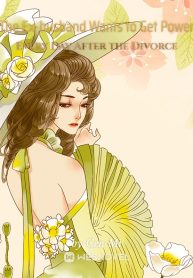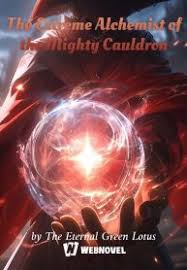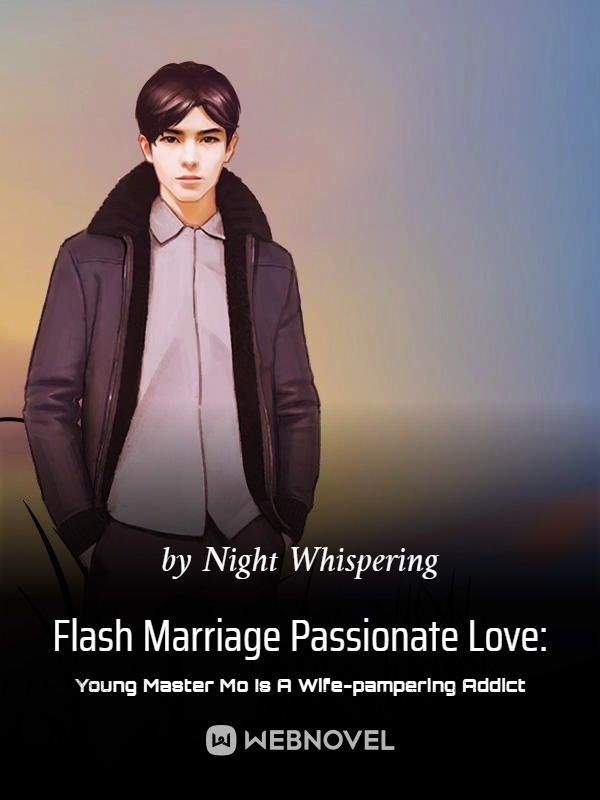33 Age of Isolation
What are realms? The descriptions provided in most early literature were fuzzy when touching on this topic. Most of them suggested that a realm might be a plane, or world, that existed parallel to the current one. They concluded on this based on the fact that the observed constellations in the night sky weren't the same across different realms.
But another literature refuted that claim by determining that while the constellations differed, if some constellations in specific planes were viewed from a different perspective or reconstruction they sometimes did mimic constellations from the current realm. This led them to believe that maybe these realms weren't actually set in different planes, but were rather within the same plane of existence.
A few mage powerhouses decided to test this theory and ventured beyond the confines of Gaea. Once they managed to break free from the strong pull, they started to explore the other bodies scattered across the void.
Through a generic survey, the mages found that a lot of these planets were uninhabitable. While they did find a few that displayed hints of life, they concluded that it was still impossible for humans to migrate there and thrive. Once mages started to venture further, beyond the immediate vicinity of their current planetary congregation, they found it difficult to maintain their bearings. The void wasn't as empty as they had initially predicted. Many malicious and unknown phenomenon lurked in the darkness that swallowed and waylaid unsuspecting mages.
Eventually, it was unanimously decided that it wasn't safe to venture farther into the void to verify the single realm theory. And thus, the definition of realms still remains a contested topic across different mage circles.
Across Gaea, there existed multiple transit points borne of natural magic that acted as portals into different realms. Luckily, or maybe it was a conscious outcome, these realms accessible from the transit points were all inhabitable for human beings, although not all of them were typically safe.
The Fae Realm, as it was called, lead to a planet filled with towering greenery and massive beasts. Mage explorers discovered that the Fae Realm could be around ten times the size of Gaea. The dominant, and well-known, species in the Fae Realm were the Elves and they were known for their inherent connection with nature and their uncanny ability to tame and rear beasts. Other humanoid species that were indigenous to this realm were Orcs, Goblins and Kobolds.
Another realm accessible from Gaea was the Fel Realm. Like its name suggested, this realm was brutal and unforgiving. It was much larger than the Fae Realm and was filled with treacherous forests, abyssal waters, labyrinthian caverns and raging volcanoes. The only humanoid species that thrived in these lands were the Dwarves. Unlike their tall and fairy-like counterparts from the Fae Realm, these hardheaded and physical species were naturally short in stature and prioritised practicality over superficial beauty. Evidently, the Dwarves weren't an aesthetically gifted race. But what they lacked in appearance, they made up in spades in strength and craftsmanship.
To survive in the Fel Realm, even the nonmagical had to have a degree of proficiency with weapons and armour. This led to the Dwarven species building their entire civilisation around smithing and enchanting. It was so deeply ingrained into their lives that even their history and mythology was directly connected to legendary weapons, armours or trinkets used by famous figures.
Due to the existence of these transit points, the exchange of information was unperturbed. However, since smithing and enchanting was the glue that held the Dwarven civilisation together, they were naturally averse to disclosing their secrets to others.
That just wouldn't do! It was an indisputable fact that Dwarven weapons were superior. In many wars, victory hinged on the fact that one side had more Dwarven forged products over the other. So if it was impossible to learn the Dwarven method, nor was it feasible to purchase and hoard Dwarven made products, why not hoard Dwarves themselves?
It was an absurd conclusion, yet one that picked up steam very quickly. At first, organisations simply inducted Dwarves into their order and raised them organically, just like any typical expert. However, one particular human sect decided to enslave Dwarves en masse, just because they didn't have the monetary power to support them.
The Dwarves were stubborn and unyielding folk. They were eventually submitted to the enslavers through force but they staunchly refused to disclose their enchanting method. Nonetheless, the enslavers were satisfied with receiving a regular supply of enchanted weapons, armours and trinkets for free.
The practice caught on eventually after the enslaving sect won multiple battles consecutively. Even more, organisations started enslaving Dwarves into their fold. The Dwarves weren't the only species that experienced such tragedies. Some organisations even enslaved some Elven races for their abilities in beast taming - using them as specialised shock units in their armies.
But everything came to an end around 5000 years ago, during the Age of Isolation.
It was unknown as to how it happened, but a lot of the transit points that acted as gateways between realms started to get severed simultaneously. Many believed that it was the act of an omniscient being, lamenting over the brutalities committed during those times.
While some transit points to smaller realms still remained, Gaea was isolated from the Fae and the Fel Realm. The remnants from those realms that remained eventually succumbed to the ravages of time, and took with them their knowledge and expertise.
"So you're saying that this sword is a result of slavery?" Guy asked with a disgusted undertone. With his modern sensibilities, he was extremely averse to the idea of slavery. The brutal and inhuman history from his old world had cemented this ideology into his core.
Al shook his head and clarified, "This is the work of a genuine and untethered craftsman. I've seen the works of enslaved Dwarves. It lacks life. It's hard to explain, but you'll understand it once you see it for yourself."
Al exhaled loudly and continued, "Humans didn't know what to do at that point. There was a sudden lack of enchanted weapons, and Dwarves to supply them. And so, mages set out to find ways to replicate the works of Dwarves the best they could. Dwarven enchantment is special, in that it was passive and organic. As you saw before, there was a very little delay between when I intended for the enchantment to activate, and when it actually activated. It is as if the weapon, and its enchantment, are an extension of my body.
The Dwarves would separate enchanted weapons into 4 categories. Excluding the gradations assigned to forged item quality, enchanted items could be Common, Unique, Epic, or Legendary. Any successfully enchanted item would qualify for a Common grade, but the ones that exhibit two or more enchantments are classified as Unique. Epic enchanted items have the special ability to grow with the user, as in they get stronger the more they are used for the purpose they are forged for. Finally, Legendary enchanted items have the properties of the preceding grade. However, they have an additional property of exhibiting limited sentience. It's as if the weapon itself has a nascent will."
"We have been able to replicate these abilities, but our solutions barely meet their Dwarven equivalents through direct comparisons. As a 2-star Blacksmith and Enchanter, I can create these Unique enchanted weapons. But you can already see that my sword cannot match up to a Dwarven Common enchanted sword," Al said while smiling ruefully. "The latency between my intent and activation is much wider, and the effect itself is greatly muted."
"The way we've been able to replicate Dwarven enchantment is by using these things called Mana Gems," Al said while pointing at the minerals embedded into the sword's guard. "These gems act as conduits for different spell formations, which in turn can be activated by triggering it using the wielder's mana."
Guy furrowed his brows in confusion, and then asked, "How are they any different from those regular devices with spell formations drawn on them? Like that heating rack for those beakers and test tubes that alchemists use."
Al nodded vigorously and answered, "THAT is why I suggested this as a possible solution for Markus. You see, those inscribed devices are different from these enchanted items because the former requires an active source of mana to run, such as the mage using it or maybe from mana crystals. If the mage cannot supply sufficient mana to the device, it won't run. But the enchanted weapons are independent of the mage. The gems can naturally absorb mana from the environment and use it to power the spells inscribed in them."
Guy's mouth opened wide in amazement. "So you're saying that if we inscribe the spells into the mana gems and embed them into a weapon, then Markus can cast those spells even if he cannot, by himself, cast those spells?!"
Al smiled widely and affirmed, "While what you said is heavily simplified, that is the gist of it. After all, there are a lot of nuances to enchantment apart from just inscribing the spell into a gem."
"True... True... True..." Guy muttered in a low voice as his mind began processing the new information.
But another literature refuted that claim by determining that while the constellations differed, if some constellations in specific planes were viewed from a different perspective or reconstruction they sometimes did mimic constellations from the current realm. This led them to believe that maybe these realms weren't actually set in different planes, but were rather within the same plane of existence.
A few mage powerhouses decided to test this theory and ventured beyond the confines of Gaea. Once they managed to break free from the strong pull, they started to explore the other bodies scattered across the void.
Through a generic survey, the mages found that a lot of these planets were uninhabitable. While they did find a few that displayed hints of life, they concluded that it was still impossible for humans to migrate there and thrive. Once mages started to venture further, beyond the immediate vicinity of their current planetary congregation, they found it difficult to maintain their bearings. The void wasn't as empty as they had initially predicted. Many malicious and unknown phenomenon lurked in the darkness that swallowed and waylaid unsuspecting mages.
Eventually, it was unanimously decided that it wasn't safe to venture farther into the void to verify the single realm theory. And thus, the definition of realms still remains a contested topic across different mage circles.
Across Gaea, there existed multiple transit points borne of natural magic that acted as portals into different realms. Luckily, or maybe it was a conscious outcome, these realms accessible from the transit points were all inhabitable for human beings, although not all of them were typically safe.
The Fae Realm, as it was called, lead to a planet filled with towering greenery and massive beasts. Mage explorers discovered that the Fae Realm could be around ten times the size of Gaea. The dominant, and well-known, species in the Fae Realm were the Elves and they were known for their inherent connection with nature and their uncanny ability to tame and rear beasts. Other humanoid species that were indigenous to this realm were Orcs, Goblins and Kobolds.
Another realm accessible from Gaea was the Fel Realm. Like its name suggested, this realm was brutal and unforgiving. It was much larger than the Fae Realm and was filled with treacherous forests, abyssal waters, labyrinthian caverns and raging volcanoes. The only humanoid species that thrived in these lands were the Dwarves. Unlike their tall and fairy-like counterparts from the Fae Realm, these hardheaded and physical species were naturally short in stature and prioritised practicality over superficial beauty. Evidently, the Dwarves weren't an aesthetically gifted race. But what they lacked in appearance, they made up in spades in strength and craftsmanship.
To survive in the Fel Realm, even the nonmagical had to have a degree of proficiency with weapons and armour. This led to the Dwarven species building their entire civilisation around smithing and enchanting. It was so deeply ingrained into their lives that even their history and mythology was directly connected to legendary weapons, armours or trinkets used by famous figures.
Due to the existence of these transit points, the exchange of information was unperturbed. However, since smithing and enchanting was the glue that held the Dwarven civilisation together, they were naturally averse to disclosing their secrets to others.
That just wouldn't do! It was an indisputable fact that Dwarven weapons were superior. In many wars, victory hinged on the fact that one side had more Dwarven forged products over the other. So if it was impossible to learn the Dwarven method, nor was it feasible to purchase and hoard Dwarven made products, why not hoard Dwarves themselves?
It was an absurd conclusion, yet one that picked up steam very quickly. At first, organisations simply inducted Dwarves into their order and raised them organically, just like any typical expert. However, one particular human sect decided to enslave Dwarves en masse, just because they didn't have the monetary power to support them.
The Dwarves were stubborn and unyielding folk. They were eventually submitted to the enslavers through force but they staunchly refused to disclose their enchanting method. Nonetheless, the enslavers were satisfied with receiving a regular supply of enchanted weapons, armours and trinkets for free.
The practice caught on eventually after the enslaving sect won multiple battles consecutively. Even more, organisations started enslaving Dwarves into their fold. The Dwarves weren't the only species that experienced such tragedies. Some organisations even enslaved some Elven races for their abilities in beast taming - using them as specialised shock units in their armies.
But everything came to an end around 5000 years ago, during the Age of Isolation.
It was unknown as to how it happened, but a lot of the transit points that acted as gateways between realms started to get severed simultaneously. Many believed that it was the act of an omniscient being, lamenting over the brutalities committed during those times.
While some transit points to smaller realms still remained, Gaea was isolated from the Fae and the Fel Realm. The remnants from those realms that remained eventually succumbed to the ravages of time, and took with them their knowledge and expertise.
"So you're saying that this sword is a result of slavery?" Guy asked with a disgusted undertone. With his modern sensibilities, he was extremely averse to the idea of slavery. The brutal and inhuman history from his old world had cemented this ideology into his core.
Al shook his head and clarified, "This is the work of a genuine and untethered craftsman. I've seen the works of enslaved Dwarves. It lacks life. It's hard to explain, but you'll understand it once you see it for yourself."
Al exhaled loudly and continued, "Humans didn't know what to do at that point. There was a sudden lack of enchanted weapons, and Dwarves to supply them. And so, mages set out to find ways to replicate the works of Dwarves the best they could. Dwarven enchantment is special, in that it was passive and organic. As you saw before, there was a very little delay between when I intended for the enchantment to activate, and when it actually activated. It is as if the weapon, and its enchantment, are an extension of my body.
The Dwarves would separate enchanted weapons into 4 categories. Excluding the gradations assigned to forged item quality, enchanted items could be Common, Unique, Epic, or Legendary. Any successfully enchanted item would qualify for a Common grade, but the ones that exhibit two or more enchantments are classified as Unique. Epic enchanted items have the special ability to grow with the user, as in they get stronger the more they are used for the purpose they are forged for. Finally, Legendary enchanted items have the properties of the preceding grade. However, they have an additional property of exhibiting limited sentience. It's as if the weapon itself has a nascent will."
"We have been able to replicate these abilities, but our solutions barely meet their Dwarven equivalents through direct comparisons. As a 2-star Blacksmith and Enchanter, I can create these Unique enchanted weapons. But you can already see that my sword cannot match up to a Dwarven Common enchanted sword," Al said while smiling ruefully. "The latency between my intent and activation is much wider, and the effect itself is greatly muted."
"The way we've been able to replicate Dwarven enchantment is by using these things called Mana Gems," Al said while pointing at the minerals embedded into the sword's guard. "These gems act as conduits for different spell formations, which in turn can be activated by triggering it using the wielder's mana."
Guy furrowed his brows in confusion, and then asked, "How are they any different from those regular devices with spell formations drawn on them? Like that heating rack for those beakers and test tubes that alchemists use."
Al nodded vigorously and answered, "THAT is why I suggested this as a possible solution for Markus. You see, those inscribed devices are different from these enchanted items because the former requires an active source of mana to run, such as the mage using it or maybe from mana crystals. If the mage cannot supply sufficient mana to the device, it won't run. But the enchanted weapons are independent of the mage. The gems can naturally absorb mana from the environment and use it to power the spells inscribed in them."
Guy's mouth opened wide in amazement. "So you're saying that if we inscribe the spells into the mana gems and embed them into a weapon, then Markus can cast those spells even if he cannot, by himself, cast those spells?!"
Al smiled widely and affirmed, "While what you said is heavily simplified, that is the gist of it. After all, there are a lot of nuances to enchantment apart from just inscribing the spell into a gem."
"True... True... True..." Guy muttered in a low voice as his mind began processing the new information.







